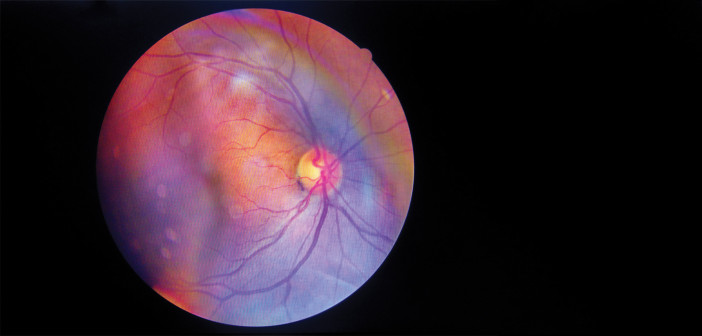Diabetes is a serious, chronic medical condition that affects over 30 million people in this country, or nearly one in every ten Americans. Over 1.4 million Americans will be newly diagnosed with diabetes this year. Diabetics have trouble regulating the level of sugar (glucose) in their bloodstream. As blood sugar levels rise above normal, the vessels that carry blood all over the body become progressively damaged.
How can diabetes affect my eyes?
Approximately 1 in 3 diabetics has signs of diabetic eye disease, which is typically found on examination of the retina.
The retina is the light-sensing inner layer of the back of the eye. It functions like the film or sensor in a camera and plays a critical role in our vision. Because the retina relies on a steady supply of blood and the oxygen that it carries, damage to the retinal blood vessels can affect its ability to function – causing decreased vision. Diabetic retinopathy is a disease of the retina caused by long-term injury to retinal blood vessels from high blood sugars. Because the blood vessels in the retina are small and fragile, they often show signs of damage even before we notice any effect on our vision. Blood vessels can begin leaking, creating a buildup of fluid in the retina – a condition known as diabetic macular edema – which can cause blurry vision and even severe vision loss.
Areas of the retina that are not receiving enough blood flow and oxygen can become permanently damaged and lose their function. With enough lack of oxygen, the retina can even begin growing abnormal new blood vessels on its surface, which can leak and bleed into the eye, or cause a retinal detachment, leading to severe vision loss that may require laser, injections, or even surgery.
Because diabetic retinopathy is a condition that develops gradually over time, your primary care doctor will recommend routine dilated eye exams if you have been diagnosed with diabetes or are at risk of developing eye disease. Regular dilated eye exams ensure that your eye doctor can monitor the blood vessels in the retina for any signs of progressive damage. As a retina specialist, diabetic retinopathy is one of the most common conditions that I treat every day with a variety of medical and surgical treatments.
It is also important to mention that eye disease is a sign of diabetic damage that is occurring all over the body. Because the retina is the only place in the human body where we can directly observe the health of your blood vessels, dilated exams are one of the best ways to monitor your risk for developing diabetic health complications. Your primary care doctor will also recommend lifestyle changes and medical therapy that can help you maintain your blood sugars at a controlled level, along with controlling your blood pressure and modifying other risk factors through dietary changes and exercise.
The good news is that most people with diabetic retinopathy are able to maintain good functional vision if they receive timely eye exams and timely treatment. If you are a diabetic and you have not had a dilated eye exam within the last year, contact your primary care doctor for a referral to an eye doctor for a screening exam.














